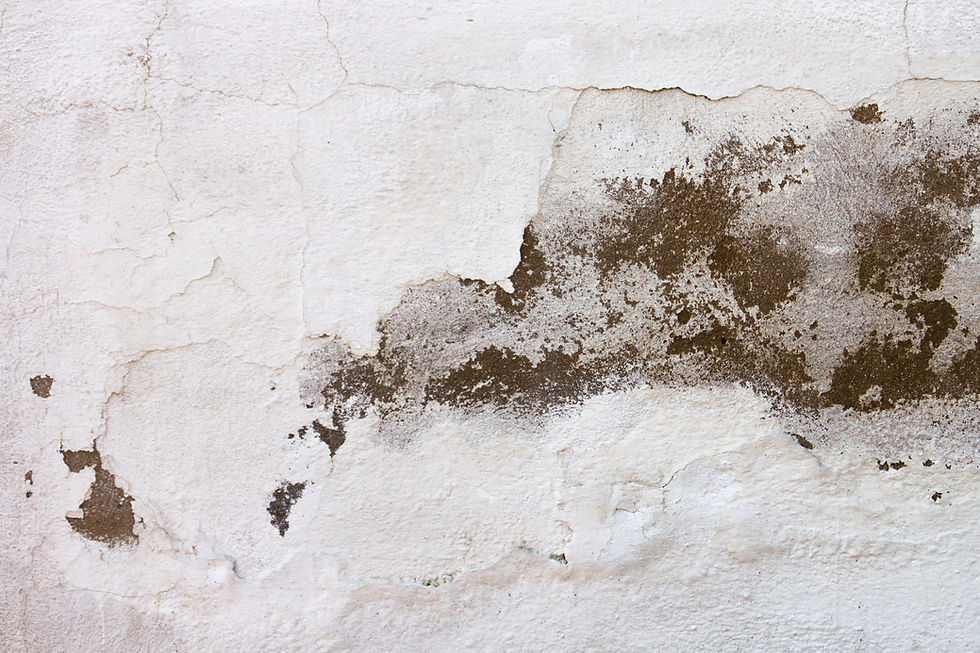Benefits of Professional Damp Surveys Before Buying a Property
- John Shaw
- Jul 17
- 4 min read
When purchasing a new property, ensuring the home is free from potential problems is crucial. One of the most commonly overlooked issues is damp, which can lead to a range of problems that affect both the structure of the property and the health of its occupants. Before committing to a property, it is essential to have a professional damp survey conducted. This process can uncover hidden damp issues and help buyers understand the true condition of a home. In this blog, we’ll explore the benefits of a professional damp survey, focusing on how damp proofing, mould removal, water proofing, condensation, and ventilation can impact your purchase decision.

Understanding Damp and Its Effects
Damp is a widespread issue in many properties, particularly older buildings. It occurs when excess moisture penetrates the structure, leading to a variety of potential problems, such as:
Damage to walls, ceilings, and flooring
A build-up of mould, which can cause health issues
Unpleasant odours
Compromised structural integrity
By identifying the root causes of damp early, you can avoid costly repairs and potential long-term damage. This is why professional damp surveys are a vital part of the property buying process.
The Importance of Damp Proofing
Damp proofing is one of the primary methods used to prevent moisture from entering a building. Professional damp surveys help identify whether the property has adequate damp proofing measures in place. Damp proofing involves installing barriers or treatments to block moisture from rising through the floors or walls. This could include:
Damp proof membranes: These are physical barriers used to stop water from rising up through the building’s structure.
Damp proof courses (DPC): Often installed in the walls, these courses create a waterproof barrier that prevents moisture penetration.
Without proper damp proofing, you risk allowing moisture to penetrate the property, leading to further issues like mould, rotting timber, and paint deterioration.
Mould Removal and Prevention
Mould is a significant concern when dealing with damp problems. Left unchecked, it can spread quickly, causing both aesthetic damage and health risks. Common mould-related issues include respiratory problems, asthma, and skin irritation. Mould thrives in damp, poorly ventilated environments, which is why it's crucial to act promptly.
A professional damp survey can identify areas where mould might be present, allowing for effective mould removal. Once the survey is complete, an expert can advise on the best course of action to deal with existing mould and prevent it from returning. Mould removal can involve:
Cleaning and disinfecting the affected areas
Improving ventilation to reduce moisture buildup
Using mould-resistant paints or treatments
Taking these steps early can save you time, money, and prevent any future health problems associated with mould.
Water Proofing Solutions for Lasting Protection
Waterproofing is a critical aspect of managing damp issues, especially in properties with basements or properties prone to heavy rainfall. A professional damp survey will assess the property’s waterproofing capabilities and identify any areas that may require improvement.
Waterproofing solutions may include:
External tanking: This method involves applying a waterproof coating to the exterior walls of a building, preventing water ingress.
Internal waterproofing membranes: These are installed on the inside walls to create a barrier against water seepage.
Cavity wall insulation: This helps prevent water from entering the structure by filling the space between the walls with a water-resistant material.
Proper water proofing is essential to prevent flooding and minimise water damage to the structure. By investing in effective waterproofing measures, you’ll protect your property from the long-term impact of moisture-related issues.
Condensation Control
Condensation occurs when warm, moist air comes into contact with cold surfaces, leading to the build-up of water droplets. This is a common problem in homes with inadequate ventilation, leading to damp conditions and, over time, mould growth.
A damp survey will not only identify the presence of condensation but also suggest practical solutions to control it. These solutions may include:
Installing proper insulation: Keeping the interior of the property at a consistent temperature can reduce condensation.
Use of dehumidifiers: These devices remove excess moisture from the air, improving the overall indoor climate.
Adding ventilation systems: These systems can effectively reduce moisture in the air by promoting airflow and removing humid air from indoor spaces.
Controlling condensation is essential for both protecting the property’s interior and improving the living environment. By addressing condensation issues, you’ll also reduce the risk of mould and improve the overall air quality.
The Role of Ventilation in Preventing Damp
Good ventilation is essential in preventing damp, condensation, and mould growth in any property. Adequate airflow helps to regulate moisture levels, keeping the home dry and healthy. In a professional damp survey, the ventilation system of the property will be closely inspected to ensure it's functioning properly.
If issues with ventilation are identified, solutions may include:
Installing vents in walls and windows: Allowing fresh air to circulate throughout the property can prevent moisture from accumulating.
Installing extractor fans: In kitchens and bathrooms, extractor fans can remove excess moisture produced by cooking and bathing.
Upgrading or installing a mechanical ventilation system: These systems can help maintain optimal air quality in the home by continuously expelling moist air.
Improved ventilation reduces the risk of damp and mould, creating a more comfortable living environment and extending the lifespan of the property.
Conclusion
A professional damp survey is an essential step in the property-buying process. Whether you’re looking to avoid the potential issues of poor damp proofing, need mould removal, or are considering water proofing, condensation control, and ventilation improvements, the survey will help you identify potential problems before they become costly repairs. By addressing damp issues early on, you ensure the longevity and safety of your investment while improving the comfort and health of your home. Don't let damp issues go unnoticed—schedule a professional damp survey today and take the first step toward a safer, healthier home.



Comments